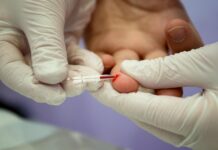Vidya Sethuraman
India Post News Service
Last week, the Food and Drug Administration (FDA) expanded its emergency use authorization for the Pfizer vaccine to include children ages 12 to 16. COVID-19 now ranks among the top ten causes of death for young people. Vaccinating 12-17 year olds has become the next major milestone in gaining control of the pandemic.
What special risks do children and teens have from the virus, what are some of the barriers they face to getting vaccinated, and why do some parents hesitate were discussed by the experts at the EMS Briefing on May 21. Experts in pediatrics, infectious disease, and childhood immunization insist the science is clear, the benefits far and away outweigh any risks.
Dr. Jose Perez, Chief Medical Officer, South Central Family Health Center in Los Angeles discussed the socio-economic barriers that may prevent children of color from getting vaccinated. He said the vaccine consists of two doses delivered three weeks apart, just like it is for adults. It’s the same dosage, too. The role of professionals of color like me becomes very important. I think our patients trust their providers, trust people who look like them. I know that the more we reach these folks that look like me encouraging our patient to get vaccinated the more likely they are to listen to our voices and not to those crazy voices out there in the Internet world,” Perez said. He said that many of his uninsured patients think they need to pay to be vaccinated even though vaccines are free to everyone. Perez said his patients are being asked to choose between earning a living for the day or vaccinating their children. “That is by far one of the biggest barriers we have identified in South Central,” Perez said.

Dr. Grace Lee, Associate Chief Medical Officer for Practice Innovation and Infectious Diseases physician at Stanford Children’s Health and professor of pediatrics at
Stanford University School of Medicine discussed the importance of getting children vaccinated, what’s in the pipeline for children under 12, and possible risk factors.
We are still continuing to admit children to a pediatric intensive care unit who are critically ill, who may wind up having long-term damage from this post-infectious inflammatory condition, said Dr Lee. One reason is because the country is reopening and kids have gone back to school.
Vaccinating children protects them from serious COVID-19 infections and complications, added Dr Lee. The vaccines have been incredibly effective. In the past week over one million teens have received at least one dose of vaccine as well,” Lee said. “Having vaccines gives you a huge layer of protection that goes above and beyond with what we can do with masking and social distancing and cohorting, etc,” she said.
Matthew Simonson, researcher with the Covid States Project and lead author of the report “Vaccinating America’s Youth.” discussed a recent Institute for Policy Research Poll, which found that almost one-third of young mothers 18-35 will not get their children vaccinated.
Mothers who are under the age of 35 — over a third of them say that they are very unlikely to get their children vaccinated, whereas for fathers of any age, it hovers between 10% and 14%. So there’s a big gap between mothers and fathers, and a big gap between young mothers and older mothers. This is because of misinformation spread through social media and also because their lives are relatively isolated compared to other adults. Asian American parents are less resistant while LatinX, African American, and White families are statistically all in the same place,” Simonson said.
So far, the COVID-19 vaccine appears to be safe and well tolerated in adolescents. All of the COVID-19 vaccines authorized for use in the U.S. have undergone rigorous study, added the experts. Since adolescents can transmit COVID-19 to others, vaccinating children may prove to be an important part of safely getting back to normal activities of life, including attending school in person, participating in team sports and spending time with friends.







